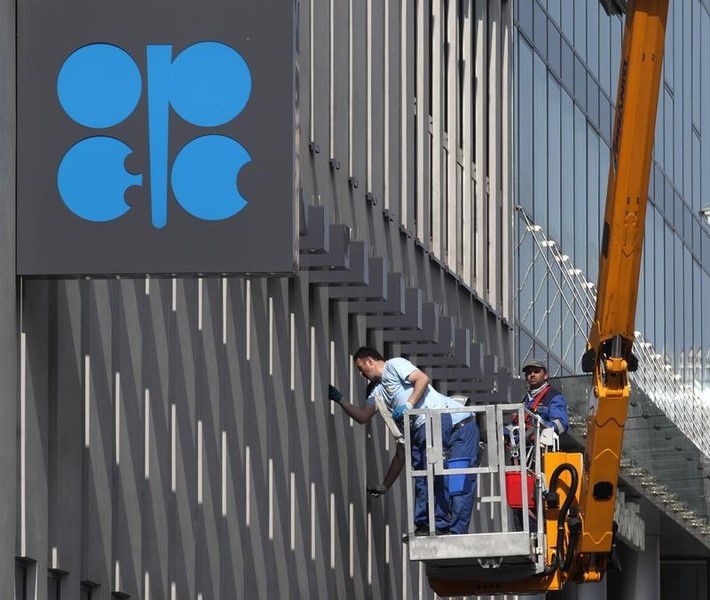Two 59%+ winners, four above 25% in Aug – How this AI model keeps picking winners
* Nasdaq, S&P hit fresh highs on trade deal hopes
* API says U.S. crude stocks fall more than expected
* Trump says he and China's Xi will sign trade deal
* China says it is in close touch with U.S. on trade deal
* OPEC+ oil output cut starts on Jan. 1
(Updates prices, market activity and comments to settlement)
By Laila Kearney
NEW YORK, Dec 26 (Reuters) - Oil prices were up about 1% to
the highest in more than three months on Thursday, boosted by
hopes that the China-U.S. trade fight would soon come to an end
and by a report showing lower U.S. crude inventories.
Brent crude futures LCOc1 settled at $67.92 a barrel,
rising 72 cents, or 1.07%. U.S. West Texas Intermediate crude
futures CLc1 settled at $61.68 a barrel, up 57 cents, or
0.93%Both benchmarks were their strongest since Sept. 17.
China on Wednesday said it was in close touch with the
United States on a trade deal signing ceremony, after U.S.
President Donald Trump said a day earlier that he and Chinese
President Xi Jinping will hold a ceremony to sign the Phase 1
trade deal. The prospect of a sealed agreement propelled Wall Street to
fresh highs, helping to support crude futures, which often
follow equities. .N
The roughly 17-month trade war between the world's two
largest economies has hit global growth and demand for oil.
Even so, Brent has rallied 25 percent in 2019, supported by
supply cuts by the Organization of the Petroleum Exporting
Countries and allies including Russia.
Also supporting prices, the American Petroleum Institute, an
oil industry group, said late on Tuesday that U.S. crude stocks
fell by 7.9 million barrels last week, much more than forecast
by analysts. API/S
"The stock market being strong coupled with the big drawdown
that we had from the API is giving us the momentum that we have
right now," said Phil Flynn, an analyst at Price Futures Group
in Chicago.
"And with the OPEC production cuts, you're running out of
reasons to be short," Flynn said.
Trading volume remained low due to the Christmas holiday,
which has delayed the release of the U.S. government's official
oil inventory report by two days until Friday. EIA/S
The so-called OPEC+ group agreed this month to extend and
deepen production cuts that would take as much as 2.1 million
barrels per day (bpd) of supply off the market from Jan. 1, or
roughly 2% of global demand.
Still, U.S. producers, not party to the OPEC+ agreement,
have been pumping record amounts of oil, especially shale.
Growth in U.S. production is forecast by many to slow in 2020.
"Oil prices continue to show year-end strength, supported by
a combination of definitive progress on the U.S.-China trade
deal, the December OPEC/OPEC+ agreement and slowing shale
activity," said Stephen Innes, chief Asia market strategist at
AxiTrader.
But more supply is coming in the new year from OPEC members
Saudi Arabia and Kuwait, which this week agreed to end a dispute
over their Neutral Zone, which can supply as much as 500,000
bpd.
